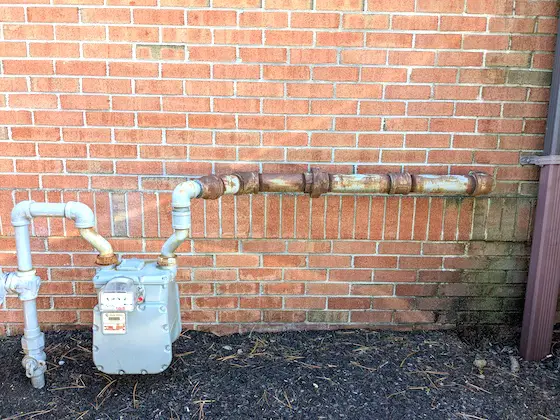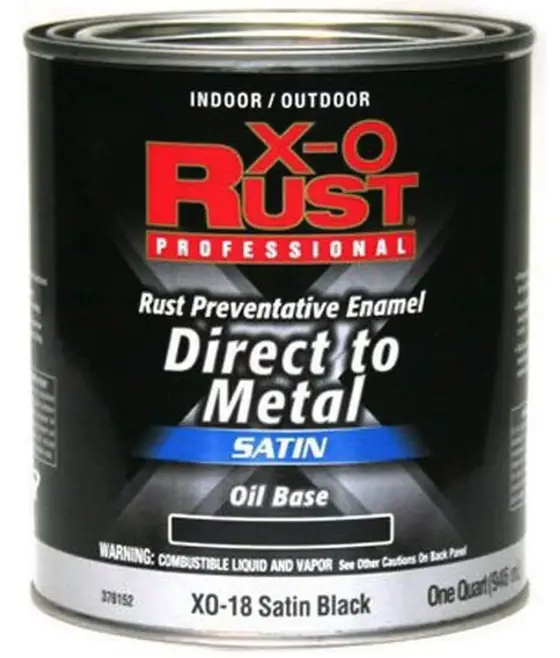Painting Rusty Metal and Steel

The rust on this large natural gas line could eventually eat through the pipe and cause a catastrophic gas leak and explosion. Copyright 2022 Tim Carter
Painting Rusty Metal and Steel - Prevent Explosions!
Did you see in the recent news the catastrophic gas explosion that killed nine people on the island of Jersey in the English Channel? It’s early in the investigation and the experts may not ever be able to pinpoint the cause, but I have my own idea based on something that happened to me two years ago.
I was hired by a small condominium association to do a thorough inspection of some outdoor covered decks that had leak issues and wood rot problems. This building was located just a mile or so from the Atlantic Ocean in New Hampshire. The flats on Jersey island were subject to the same marine environment.
My inspection started at the uppermost deck and I worked my way down to the ground-floor deck. When I was underneath the deck in a passageway that led to a basement door, I saw black iron gas lines that extended from the outdoor meters into the basement. These are connected to the water heaters and furnaces.
The iron pipes weren’t black. They were a crusty brown as they were completely coated in rust. I immediately informed the president of the condo association that these pipes must be painted with a special rust primer and then two coats of finish paint. I instructed her to make sure she read the instructions on the label of the special metal rust primer to prepare the pipes so the primer adhered well.
I was reminded of a quote from the captain of the Norwegian Dawn cruise ship. I had attended a talk of his five years ago while on a short cruise and he said, “The sea EATS iron and men.” If you remember some of your high school chemistry you know this to be true. Saltwater is extremely corrosive to unprotected steel and iron.
Author's Note: Ed Nemec sent me this after I mentioned this column in my Ask the Builder newsletter: "I had a gas meter stubbed into a cabin but never used for decades. When I went to use it, the thin thread snapped off with no pressure as it was only stubbed - no stress at all. The meter was still turned off but it amazed me at the time. So I experienced what you're talking about in Illinois with no salt conditions."
You may or may not know this but I’ve been a master plumber since 1981. I’ve installed miles of black iron gas lines in my lifetime. I’ve hand-threaded each and every pipe with cutting dies. You may have never thought about the threaded pipe, but where the grooves are the pipe wall thickness has been cut away and reduced to create the threads.
This means that the strength of the pipe is much less in these grooves. If rust has been working on the pipe eating away at the iron, then if something bumps the pipe or it becomes stressed or bent by accident, the metal at the base of the grooves can crack just like you bending a thin pop-top tab on a soft drink can. Gas now starts flowing from the pipe like air from a blown-up balloon.
You don’t need to live near the ocean for this to happen. Normal rain or humidity in the air will cause rust to form and grow on unprotected iron or steel. Your house has all sorts of structural steel elements that are rusting. Many ignore this rust at their peril.

This is FANTASTIC paint to use on black iron pipe or any steel. Be sure to use their primer and coat the primer with finish paint within hours of the primer drying. CLICK HERE to have it delivered to your home.
What about your deck joist hangers? I know they were galvanized when they were installed, but has that zinc coating worn off and do you see rust?
What about the nails that attach the deck joist hangers and other structural connectors to the wood? Is the copper in the treated lumber leaching out with each rain event causing rust and corrosion?
What about those cheap electroplated roofing nails the roofer used to install your shingles? I’ve seen new roofing nails transform to rusty fasteners in as little as five to seven years. The best roofing nails are ones that are double-dipped hot galvanized. Period.
What about any steel support posts in your basement or crawlspace? Do you see rust on these? What happens if the rust eats through the post and someone bumps into it?
What about rust on any horizontal steel I-beams in your basement or crawlspace? Are you ignoring it? If so, you’re making a sad mistake.
The good news for you is that painting rusty black iron pipe or all the things I listed above is absolutely a simple DIY job. Most of the high-quality rust primers and special rust finish paints are available in spray cans should you not like to use a brush.
I recorded a video about five years ago showing the difference between two top rust-paint brands. The test panels in the ASTM scratch test were like night and day. I urge you to watch this video so you purchasea paint that will last for many years, even in a marine environment.
Column 1487